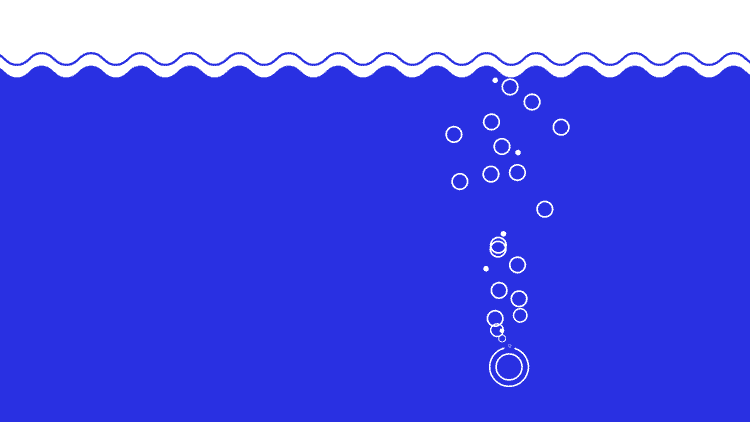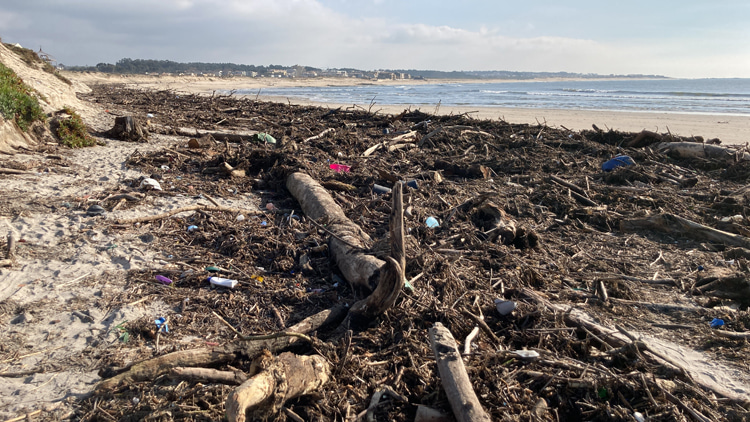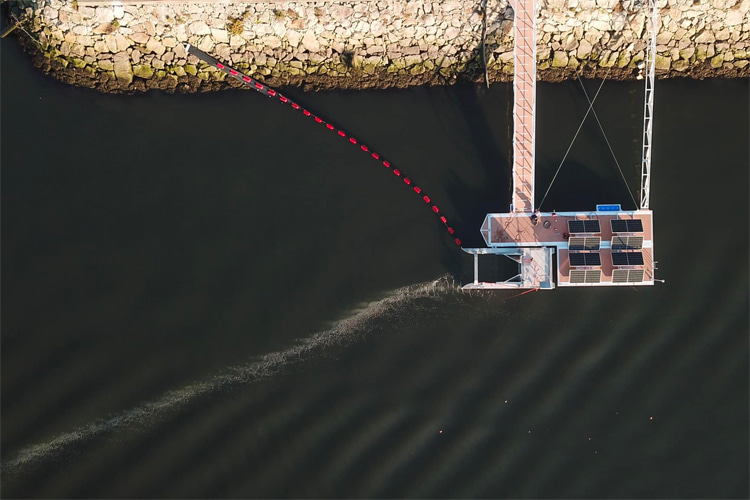A large percentage of plastic in the world's oceans comes from rivers. The Great Bubble Barrier promises to tackle the problem with a simple yet ingenious solution.
Imagine an underwater wall of tiny bubbles continuously flowing across the entire width of a river and channeling plastics to the side where they can be later collected.
This is the short explanation of the Great Bubble Barrier, a technology developed by four Dutch entrepreneurs - Francis Zoet, Anne Marieke Eveleens, Saskia Studer, and Philip Ehrhorn - and put to the test in 2019 in the Netherlands.
The Bubble Barrier is comprised of three main components:
- An air-generating system;
- A bubble curtain;
- A collection mechanism.
The system creates a barrier of bubbles, which hinders plastic debris from drifting downstream into marine environments.
It releases air through a tube with holes positioned at the riverbed. This process creates ascending currents that elevate plastic waste to the surface.
Strategically positioning the bubble curtain at an angle across the river utilizes the river's natural current to guide plastic debris toward the shore, where the collection system captures it.
The Great Bubble Barrier is designed to remain effective regardless of changes in water levels or disturbances from nearby ship traffic.
It is installed to cover the entire width and depth of the waterway and operates continuously, day and night, without disrupting maritime activities.

From Prototype to Real Life
After successful deployments in Katwijk, Amsterdam, and Wervershoof, the Great Bubble Barrier faced its first international test in Vila do Conde, Portugal.
The fizzy technology was installed near the mouth of Rio Ave in November 2023, close to high-performance kayaking and canoeing training centers and the busy surf spots of Azurara and Árvore.
The energy supply of the Bubble Barrier will be co-powered through solar panels installed by the University of Malta, which has designed a tailored solar panel system - both inland and floating - connected to the Bubble Barrier compressor and nearby pool buildings.
The solar panel system is expected to generate 57,300 kWh of renewable energy in the first year of operation, compensating for part of the electricity required by the Bubble Barrier from the electricity grid.
The installment of the innovative Portuguese river plastic collecting system involved several entities, including the Vila do Conde town hall, the European Union-funded Maelstrom project, the National Research Council of Italy (CNR), the Interdisciplinary Centre of Marine and Environmental Research (CIIMAR), the Portuguese Environmental Agency (APA), the Vila do Conde Port Captaincy and the Vila do Conde Environmental Monitoring and Interpretation Centre (CMIA).

High ROI
The problem of riverine plastic pollution is universal: plastic debris is transported by rivers, crossing national and political borders, before reaching oceans.
Rivers become unstoppable plastic highways.
The Bubble Barrier has been proven to effectively capture 86 percent of inorganic debris in the water column without obstructing the passage of fish, other marine life, or ship traffic.
Moreover, it covers the whole width and depth of the river.
In Amsterdam, the Great Bubble Barrier prevents 8,000 pieces of plastic items per month from leaving the city's canal and entering the North Sea.
The effervescent apparatus can also trap microplastics, one of the environment's worst nightmares.
All plastics collected on the riverside are then diverted to the nearest recycling center.
The investment required to get the Great Bubble Barrier in action starts at €350,000, a one-off sum that will substantially reduce the resources needed to clean beaches all year round.
